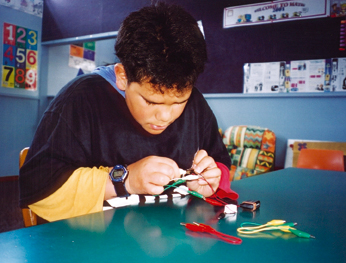|
|
:
Introduction |
|
Technology is a creative, purposeful activity aimed at meeting needs and opportunities through the development of products, systems or environments. Knowledge, skills and resources are combined to help solve practical problems in particular social contexts.
Technology
is a multi-disciplinary activity. To attempt to represent all or even
most of the areas, meanings and applications of technology within the
national monitoring assessment programme would be unrealistic. After
careful examination of the scope of the technology curriculum, it was
decided to assess some key aspects. Selected areas of content and broadly
overlapping contexts (e.g. personal, home, school, community) were used
to investigate the ideas student have and the processes they can use. This
chapter reports the results of seventeen technology tasks administered
to individual Mäori students in both general education settings
and Mäori immersion settings. The tasks address the three strands
of the technology curriculum: technological knowledge and understanding,
technological capability, and technology and society. Eight
tasks were administered in a videotaped one-to-one interview format
and nine were attempted in a station or independent format (where students
worked independently to develop a design, assemble a product, or record
written responses to questions). National
monitoring results are reported task by task so that results can be
understood in relation to what the students were asked to do. To allow
comparisons of performance between the 2000 and 2004 assessments, however,
five of the seventeen tasks have been designated link tasks. Student
performance data on these tasks are presented in this report, but the
tasks are described only in general terms because they will be used
again in 2004. Mäori students in general education and Mäori students in Mäori immersion settings performed equally well on nine tasks. Students in immersion programmes scored statistically significantly higher on two tasks and Mäori students in general education scored statistically significantly higher on six tasks. These comparisons must be interpreted with considerable caution, for the reasons discussed in Chapter 2. |
